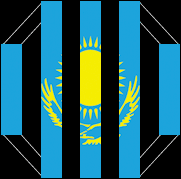Fighter On Fighter! Breaking Down ‘Eagle!’

Undefeated smashing machine, Khabib Nurmagomedov, will finally get a shot at Lightweight gold opposite the hard-hitting, Al Iaquinta, this Saturday (April 7, 2018) at UFC 223 inside Barclays Center in Brooklyn, New York.
It’s been an exceptionally long road to the title for Nurmagomedov. Part of that is due to his own issues — be they injury or weight cut — but none of the delay is based on his in-cage performance. Nurmagomedov is a destroyer, the rare type of fighter that announces his game plan to the world and is still remarkably difficult to stop. There is no mystery to “The Eagle,” just grappling excellence. Let’s take a closer look at his skill set:
Striking
An experienced and decorated athlete in Russian hand-to-hand combat, Nurmagomedov’s kickboxing inside the Octagon serves a single purpose: to close the distance. Some will criticize Nurmagomedov’s looping shots or straight forward charges, and those criticisms have roots of truth. At the same time, none of Nurmagomedov’s striking choices are not by accident; they are incredibly effective and difficult to deal with.
Strikers like Edson Barboza and Michael Johnson know how to keep their backs off the fence — against quality competition nonetheless — but Nurmagomedov put them there frequently.
On the feet, Nurmagomedov’s goal is pressure, but he doesn’t always charge forward relentlessly like he did opposite Barboza. In fact, if you watch that bout and compare it to his victory over Johnson, his approach differed based on their striking styles. Barboza is a far more dangerous kicker than puncher, which resulted in the ceaseless, run-straight-forward approach that jammed up many of Barboza’s kicks. Johnson is the faster and more powerful boxer, and Khabib was more cautious with his forward pressure as a result.
Just as a brief aside: Barboza did nearly everything perfect in the first 90 seconds of their fight. He jabbed high and low, smacked the inside leg hard, circled laterally constantly and changed directions often, and he even showed off his stellar takedown defense by getting away from the first double leg.
Yet none of that mattered after Nurmagomedov’s first takedown.
As for Nurmagomedov’s actual striking, it’s largely meat-and-potatoes. He walks his foe down with the jab and cross, keeping his hands high and slipping his way forward. Much of the time, Nurmagomedov will respond to whatever his opponent throws — assuming it doesn’t land fully — with a 1-2, keeping on his opponent and always looking for a chance to level change.
Opposite Barboza, Nurmagomedov was far more active in throwing round kicks. They were hard kicks thrown well enough — if not amazingly set up — but it was smart tactic in kicking with the kicker.
Aside from the basics, Nurmagomedov mixes in smart tactics to set up takedowns. He’ll level change into punches or mix a shovel hook into his offense (GIF), strategies designed to punish fighters for daring to defend his takedowns. Similarly, the flying knee works wonders for Nurmagomedov, not so much in landing and doing major damage, but it often convinces foes to square up and raise their guard.
Wrestling
Nurmagomedov is a ridiculously credentialed Sambo athlete, as well as a Judo black belt and experienced freestyle wrestler. Look up his wiki page if you’d like the full details, but know that “The Eagle” has a lifetime of wrestling and grappling experience that allows him to dominate fights.
First and foremost, we have to talk about how Nurmagomedov actually scores the takedown. Against the average foe, Nurmagomedov will time an easy double leg, ducking under and snatching the hips for an easy slam (GIF).
Against high-level competition, it’s usually more complicated than that, and timing the double so perfectly is more difficult. In such situations, Nurmagomedov is more willing to dive for a single leg takedown. I mean dive quite literally, as Nurmagomedov is willing to take ugly shots in order to get a grip, recover good posture, and then finish the shot.
Nurmagomedov has a number of ways of transitioning into a finished takedown. Early on, foes did not quite understand just how good Nurmagomedov was from the back clinch, and they were willing to turn away and attempt to limp leg out of shots. There’s a reason why it’s rarely attempted now, as Nurmagomedov is an expert at suplexing, tripping, dragging, and simply mugging fighters from that position (GIF).
The more common approach now is to avoid that at all costs and try to defend against the fence. Nurmagomedov has many answers for that position as well, but Barboza was able to dig and underhook and spin his foe a couple of times. Without sounding like Dominick Cruz, securing the underhook first is key, as using an overhook to stop the double leg — common practice in MMA — is a bad idea.
Nurmagomedov is perfectly happy to give up on a shot and transition into the upper body clinch. He may not be able to secure a body lock right away, but Nurmagomedov will dig his underhook — the one his opponent gave up by using an overhook to stop the shot — very deep. Between the deep underhook and head position — he always has his forehead driving into the jaw — the Dagestani is in great situation.
From that position, Nurmagomedov’s usual go to is to attempt a body lock or at least get close to one, get his hip in, and attempt to muscle his foe over that hip. If they resist by widening their base, Nurmagomedov will suddenly change directions with an inside trip instead. At any point, Nurmagomedov can use that underhook to drop back down into a single leg, which can quickly become a double leg against the fence.
Once on top, Nurmagomedov’s control is extraordinary. There’s some great details in his game, but the big picture here is that Nurmagomedov is constantly triangling the legs or controlling a double-wrist ride.
Triangling the legs is a common technique in MMA, as it allows the top fighter to sit on their foes legs and stop them from standing up. Usually, it’s a method of stalling and landing little punches. That’s not the case for Nurmagomedov, who manages to land seriously hard punches from this position, something of a unique trait.
Generally, the go-to method of escaping the leg triangle is to sit up against the fence and wall-walk back up. Not only will Nurmagomedov smash you with uppercuts for daring to attempt a basic escape, he’ll maintain the triangle and rotate you off the fence after landing a few hard shots. Then, it’s back to that life-altering beating.
It’s easy to understand why fighters give up the back to escape the leg triangle. Sadly, they will find no reprieve there, as Nurmagomedov will immediately transition into a double-wrist ride.
It’s not uncommon for me to have a difficult time figuring out what technique to cover for a fighter’s signature technique. I had many options this time around — Khabib’s next four main events will be easy work — but the most appropriate answer was some extra analysis on the double-wrist ride, a brutally punishing position.
Lastly, I wanted to touch on Nurmagomedov’s ground striking itself. Outside of those two main positions, Nurmagomedov does excellent work while transitioning around his opponent. He’ll frequently grab a hand a pin it to the mat, punching with his free hand or releasing the trapped arm and hitting before it can return to protect its owner’s face. Similarly, Nurmagomedov looks for opportunities to push his opponent’s arm across their body, which turns them away (potentially towards that double-wrist ride) and allows for a few more free punches.
There’s also a special element of brutality to Nurmagomedov’s ground and pound. He’ll utilize classic ground striking techniques like throwing the leg by into a punch, but Nurmagomedov has truly mastered getting every extra bit of thud into each strike. It demoralizes and breaks opponents, leaving them terrified of being taken down for completely understandable reasons.
Brazilian Jiu-Jitsu
Perhaps the most underrated aspect of his game, eight of Nurmagomedov’s victories come via tapout. While some of this finishes are more the result of his brutal ground strikes than anything else — see his attempts to snatch a rear naked choke or arm triangle out of nowhere against a dazed foe — there’s also some crafty technique involved.
Nurmagomedov’s leg triangle commonly leads to guard passes as well, and once around the guard, Nurmagomedov has another pretty signature chain of techniques. From side control, he’ll pretty immediately begin looking for the crucifix. It can be a fight-finishing technique, but even if his foe manages to wiggle out, it’s another few free punches while they try to wriggle free.
Depending on how his foe defends, Nurmagomedov has a couple of options. If they roll towards him and try to pull their arm tight, “The Eagle” will drive a knee across their stomach. Knee on belly is a miserable spot in MMA that can easily turn into mount, back mount, or more free punches.
If instead Nurmagomedov’s foe tries to buck or sit up from the crucifix — or Nurmagomedov just wants to do it — he’ll attempt to step over the head and trap it. Once there, punches are available, but Nurmagomedov will also attack the free arm with shoulder locks.
He eventually landed the kimura on Michael Johnson from a regular side control, but the half-dozen times he crucifixed “The Menace” helped set it up (GIF).
Interestingly, Nurmagomedov has four triangle wins on his record, which doesn’t really fit the mold of top position mauler. He’s shown quick hips from the mount and back, throwing up the hold with a great deal of confidence.
Opposite Abel Trujillo, Nurmagomedov briefly wound up on his back twice during scrambles. In both situations, he immediately went for the triangle. The first time, Nurmagomedov wound up nearly locking up an armbar instead. Trujillo managed to survive and maintain top position, so Nurmagomedov used butterfly hooks into a stand up and arm drag to reverse him. In the second example, Nurmagomedov successfully locked up the triangle and nearly finished Trujillo, but “Killa’s” broad shoulders allowed him to survive until the end of the round.
Thankfully, someone made a highlight clip of both transitions, so check ‘em out yourself (GIF)!
Conclusion
Nurmagomedov is not a perfect fighter, but he’s on one of the most impressive win streaks of all time and is remarkably great at what he does. Regardless of the circumstances surrounding this title fight, “The Eagle” has unquestionably earned a title shot. A win earns him the true official title and marks him in the history books as champion — an accolade he easily could have earned already given his resume — even if two other men will contest that status.
*****
Andrew Richardson, a Brazilian jiu-jitsu purple belt, is a professional fighter and former amateur champion who trains at Team Alpha Male in Sacramento, California. In addition to learning alongside world-class talent, Andrew has scouted opponents and developed winning strategies for several of the sport's most elite fighters.













